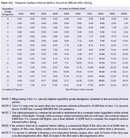brtlmj
Registered
As we all know, we are not supposed to fly after diving, and the "no flying" period depends on the type of diving we do. What I am wondering about is: where do those numbers come from, and what type of flying is assumed? Is it "normal commercial flight with cabin pressure altitude of 7,000 feet or so"? Or does it include the possibility of "unlikely event of loss of cabin pressure"?
You see, I am a glider pilot. Getting to 10,000-14,000 feet in a glider is not unusual where I fly, and I could conceivably get much higher than this.
Any comments?
Thanks!
Bart
You see, I am a glider pilot. Getting to 10,000-14,000 feet in a glider is not unusual where I fly, and I could conceivably get much higher than this.
Any comments?
Thanks!
Bart





